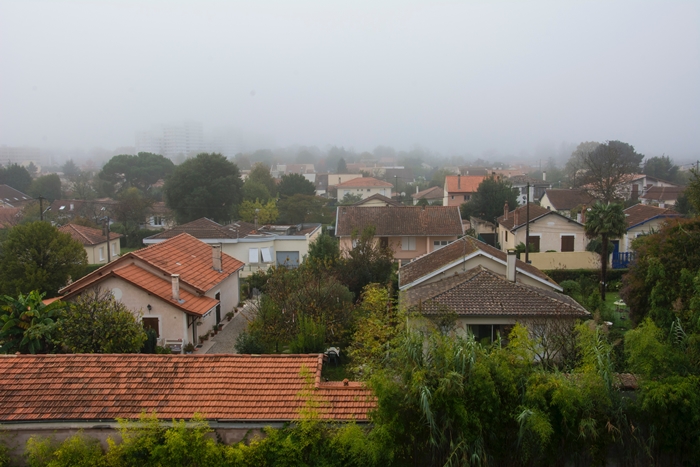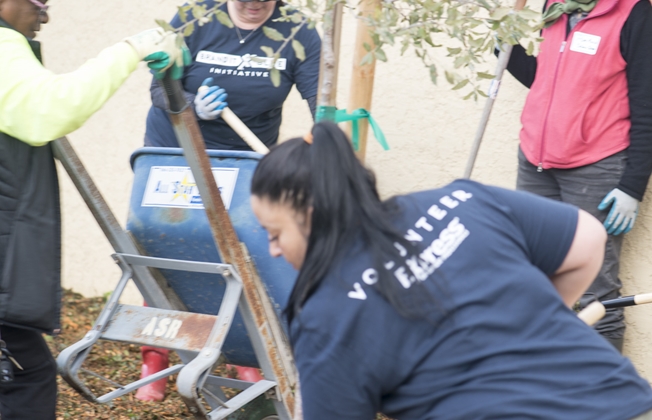By Kassie Munro, Resilient Neighborhoods Program Manager

Do you want to be a part of a pioneering new effort in Vallejo, and learn how we can make our neighborhoods more resilient?
Join us Saturdays May 25 through June 22!
Our first pilot Resilient Neighborhoods team has been selected, the design process is underway, and we are excited to begin scheduling our educational installation days in the coming weeks. For the first time, we will be working with a team of four homeowners to begin transforming their street into an environmentally and socially resilient community hub. Using landscaping elements of our Sustainable Backyard program as a foundation, this new program will build in additional resiliency elements focused on temperature regulation, restoring ecosystem functions to the urban environment and strengthening community networks. The design will treat the homes as part of the same ecosystem, linking them together through shared services and planned diversity, like providing shade in communal areas and producing a varied supply of food. Over time, we plan to work with this established team to bring additional neighbors and community organizations into the hub as part of a larger movement to transform our cities into more regenerative, equitable and resilient places to live.
Working with four unique homes simultaneously provides a new opportunity for us to showcase how permaculture techniques can be applied to a variety of landscapes to enhance climate and social resilience. Permaculture is an adaptive approach and methodology, and the diversity of our homes in this pilot will allow us to demonstrate how the same core principles can be applied to a variety of homes to achieve outcomes that are tailored to the individual members of the Resilient Hub, and the team as a whole. This pilot is an opportunity for us to expand our demonstration gardens not only in scale, but in scope.

Join us as we explore:
Heat Mitigation and Biomimicry
The urban heat island effect is a challenging consequence of our changing climate, felt most dramatically in urban areas with extensive paved surfaces and little vegetation. We will be exploring how to use shade trees and structures to help keep our homes and outdoor spaces cooler in times of extreme heat, as well as the impact that evapotranspiration from greenery has in helping to cool the air. Our partner Richard Fisher will also be working with us to pilot innovative biomimicry techniques throughout these installations that explore additional ways to help mitigate temperature extremes, as well as restoring other valuable ecosystem services back to our built environment. Biomimicry is guided by and aims to mimic Mother Earth’s methods for providing important ecosystem functions. For example, an old tree log can be used to capture, store and cycle water in a yard, similar to the role it would play in a forest setting. You can read more about biomimicry and Richard’s approach here.
Integrating Permaculture into Existing Landscape Features
Creating a dramatic transformation from water-hogging lawn to lush, water-wise edible foodscape is a powerful and compelling demonstration. But for many of us, our yard isn’t a blank canvas and the thought of needing to strip things down to a clean slate to transition to a permaculture landscape can be daunting. Through these installations, we will be highlighting how to work within your existing landscape features, both hardscape and established plants, to integrate permaculture techniques and begin the transition to a more sustainable, regenerative and productive landscape.
California Native, Ultra-Low-Water Showcase
One of our Resilient Neighborhood homeowners is a passionate California native plant enthusiast. We will be working with her to design a unique backyard landscape that will serve as a pollinator oasis and embrace California native and drought-tolerant plants. Within this garden, we will also be building a bridge between native and permaculture-based designs by including soil building and water capture techniques like bioswales, and incorporating small amounts of food forestry through fruit tree guilds, berry bushes and edible perennial plants.
Along with these new features, we will be holding workshops on all of our foundational sustainable landscaping elements, including:
- Roofwater capture
- Bioswales
- Edible landscaping
- Laundry-to-Landscape greywater systems
- Sheet mulching
Check our calendar for individual installation dates to register for upcoming workshops. By signing up for our newsletter, you can be sure you’re the first to hear when events are scheduled.
Register for the upcoming workshops at the links below:
June 1: Greywater and Lawn Conversion
June 8: Understory, Drip and Water-Capture Feature
June 15: Swales, Mulch, Trees, Hugelkultur
June 22: Laundry-to-Landscape Greywater Installation
June 29: Understory and Drip Irrigation
We hope to see you there!
The Resilient Neighborhoods program is funded through a grant from PG&E.
Work at one of the homes in the neighborhood is funded through a grant from the Solano County Water Agency.

